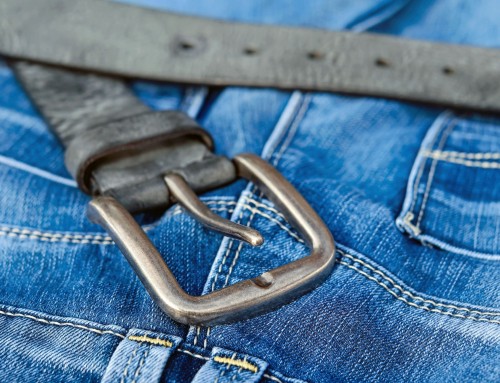We have all heard from different fitness gurus how important are proteins to our body. But do we actually know how much protein we need to be eating every single day? And also, how to eat enough protein?
How are we to ensure we are eating enough protein to sustain our body and prevent nutritional deficiencies? Hopefully, some of the ideas below will make everything clearer.
How Much Protein Do We Need?

To address the issue of how to eat enough protein, we have to first clarify how much does “enough” mean.
According to the Dietary Reference Intake (DRI), 0.8g of protein is needed for every kilogram of our body weight (0.36 grams per pound).
This would equate to an average of 56 grams of protein for an average sedentary man and an average of 46 grams for an average sedentary woman.
Still, this amount seems pretty inadequate, especially with popular research showing that we need to consume more protein if we are looking to lose weight, maintain lean muscle and increase metabolic weight.
There is no right answer regarding the right amount of protein one needs daily, as this depends on body type, activity level, age, gender and physique goals.
Not All Protein Is Absorbed

Secondly, we have to take into account that not all the protein we consume in food is readily utilized by our body. Some foods have higher bioavailability than other foods in terms of protein uptake.
In simplified terms, bioavailability is a scale rating that determines how much our body can utilize the protein from the food sources we eat. Just because we are chomping down three to four chickens at one seating, does not mean all the protein in the chicken will be absorbed.
Bioavailability Value (BV) is used as a scale rating. The higher the BV, the more efficiently your body can absorb and utilize the protein from that protein source.
According to Bioavailability of protein, here are the following values we should take into account when talking about protein source:
- whey protein isolate blends: 100-159 BV
- whey concentrate (lactalbumin): 104 BV
- whole egg: 100 BV
- cow milk: 91 BV
- egg white (albumin): 88 BV
- fish: 83 BV
- beef: 80 BV
- chicken: 79 BV
- casein (milk protein): 77 BV
- rice: 74 BV
- soy: 59 BV
- wheat: 54 BV
- beans: 49 BV
- peanuts: 43 BV
How To Eat Enough Protein?

Now that we have made it clear that not all protein is absorbed, we can get down to the main purpose: how to eat enough protein.
As you can see from the list above, the highest BV of protein comes from whey protein sources. There are so many ways of ensuring you are getting protein in your everyday diet. Let’s see!
How to get enough protein without eating meat?
How to eat enough protein without including meat in your diet is a really important aspect here. If you’re not a meat lover that doesn’t mean you cannot have a healthy protein meal. Here are a few examples of what to eat and where to get your protein from:
- Diversity
Clearly, you can find protein in other foods, not just meat. Why don’t you try beans, nuts, seeds and vegetables such as peas and lentils. Also, you can find enough protein in dairy products: eggs, milk, cheese, yogurt.

- Protein shakes
I’m sure you love healthy shakes. This is another way to get protein without having to eat meat. Whey protein, which you can find under the form of powder, is used a lot by athletes because it helps muscles recover faster.
Whey protein powder can be used in whatever smoothie or shake recipe you prefer.
If you don’t eat dairy, there are also dairy-free protein powders such as those made from hemp, peas, and brown rice.

- Protein side dish
Protein can be used not just in main dishes, but also in side dishes (beans, vegetables, grains – quinoa). These can be used in salads or with healthy fries.

- Check your carbs
Not eating meat does not make it ok to replace it with more carbs. Don’t eat just bread, pasta, pizza. Eat healthy carbs (whole grains, seeds, nuts, berries, vegetables) and make sure to also add some protein in your meal/snack.

- Meat-free recipes
You can find so many recipes with rich sources of protein, without having anything to do with meat. Replace it with lentils, chickpeas, kidney beans, quinoa, dairy products. I’m sure you will love it. Use seeds in salads and use some protein powder in your morning shake.

How to eat enough protein if you’re vegetarian?
Here is a list of protein sources that can be used by vegetarians. Incorporate these into your recipes and make sure at least one of them is included in your meal.
Since you won’t be eating meat, the most high-protein food you can get, you should really eat as often as you can these veggies, but also discuss this diet “problem” with a nutritionist.
- green peas
- quinoa
- hemp
- nuts
- beans
- chia seeds
- chickpeas
- tofu and tempeh
- edamame
- seitan
- leafy greens
- sesame seeds
- sunflower seeds
- poppy seeds
- dairy-free milk
- cocoa powder, unsweetened
Top Sources Of Protein
Our diet represents the main source of protein, which is divided into 3 main groups:
- High-protein foods (red meat, fish, poultry, eggs, nuts, seeds, cheese, yogurt, beans)
- Medium-protein foods (grains: rice, barley, eats, millet, wheat)
- Low-protein foods (vegetables, fruits, juices)
When discussing how to eat enough protein and how to assure your daily protein intake, theses are the main subjects we need to take into account: fish, skinless meat, dairy and some canned foods. We have discussed the most important vegetable sources of protein already.
#1. Fish and Seafood

This category is an excellent source of protein and it’s low in fats. Take a look here what specifically you should be eating:
- Yellowfin tuna – 25 grams/ 85 grams serving
- Octopus – 25 grams/ 85 grams serving
- Halibut – 23 grams/ 85 grams serving
- Sockeye salmon – 23 grams/ 85 grams serving
- Tilapia – 21 grams/ 85 grams serving
#2. Meat

Skinless meat is another great source of lean protein.
- Pork chops – 26 grams/ 85 grams serving
- Chicken breast, skinless – 24 grams/ 85 grams serving
- Turkey breast – 24 grams/ 85 grams serving
- Steak – 23 grams/ 85 grams serving
- Ground beef – 18 grams/ 85 grams serving
#3. Dairy

Besides the rich source of protein, dairy products also contain a lot of calcium and Vitamin D.
- Whey protein – 24 grams/ 1 scoop serving
- Greek yoghurt – 23 grams/ 227 grams serving
- Cottage cheese – 14 grams/ 120 grams serving
- Swiss cheese – 8 grams/ 28 grams serving
- Low-fat milk – 8 grams/ 245 grams serving
- Eggs – 6 grams/ 1 large egg
#4. Canned Foods

Canned foods are also a great source of protein, however, not all of them are rich sources.
- Anchovies – 24 grams/ 85 grams serving
- Corned beef – 24 grams/ 85 grams serving
- Tuna – 22 grams/ 85 grams serving
- Sardines – 21 grams/ 85 grams serving
- Navy beans – 20 grams/ 1 cup serving
- Dried lentils – 13 grams/ a quarter cup serving
You can agree, by now, that protein is essential for our living and that it gives us energy and helps our bodies recover. We cannot live without it no matter how much we try.
That’s why it is so important to know how to eat enough protein on a daily basis.
Did you like this article?
Source: Pixabay










